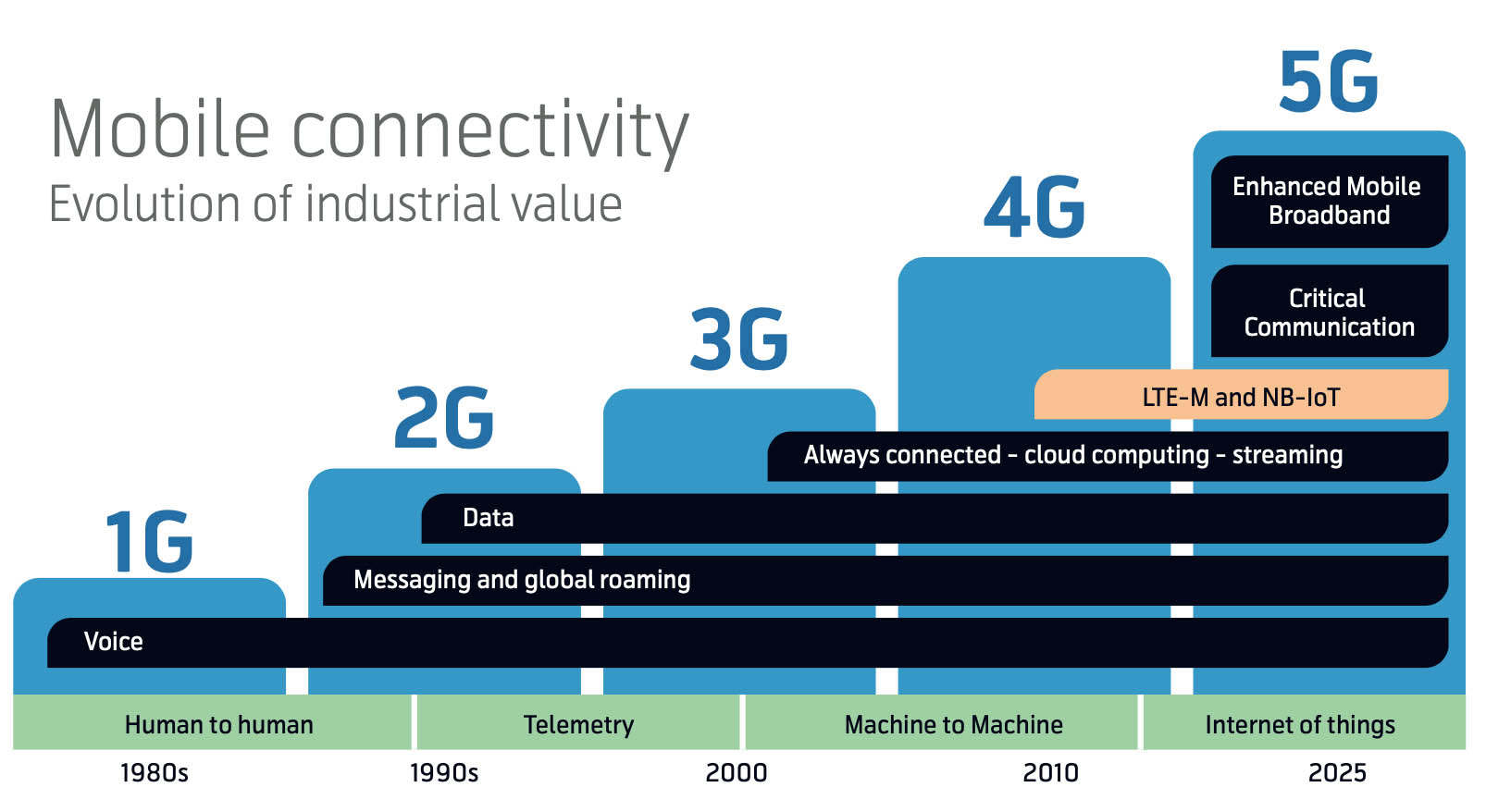Mobile Connectivity - An Evolution of Industrial Value.
In the first feature of a series of excerpts from a recent white paper published by Telenor Connexion, we look at the development and evolution of mobile connectivity technologies…
Connectivity is a crucial part of product design and performance and the choice of connectivity technology must be considered early in the process. This is a challenging choice given the quick technology and market development.
5G technologies are around the corner, 2G and 3G networks are starting to be phased out and new network technologies that support LPWAN are starting to become globally available in the form of LTE-M and NB-IoT- also referred to as Mobile IoT.
For the first time networks have been developed to answer the specific needs of connecting things. Previously, connected units have been communicating on infrastructure developed for consumer needs.
LTE-M and NB-IoT are standardized, secure, and operator-managed in licensed spectrum. They are designed for IoT applications that are low cost, use low data rates, require long battery lives and often operate in locations that are hard to reach.
LTE-M and NB-IoT will be the obvious choices for industries looking for 2G and 3G replacements for devices with long lifecycles, requiring extended device battery life and coverage.
Both technologies are good choices for deployments with expected lifespans of a decade or more, however, there are differences between them that make each of them more suitable for some IoT applications rather than others.
So which one is the best choice for your application? We strongly recommend reading the guide available to Field Service News subscribers to help you better understand this question – as it is of critical importance.
This guide describes the relative benefits and limitations of each technology to help enterprises to make the right selection for long-term success.
To begin though, here’s a short overview of the development of mobile connectivity technologies. Mobile connectivity has evolved from being the infrastructure for human communication to telemetry, machine-to-machine and the internet of things applications.

- The first version of mobile connectivity – 1G – introduced wireless voice.
- In 2G, roaming and SMS messaging were introduced and were later enhanced with GPRS for data communication. SMS messaging and GPRS became widely used for basic telemetry. Roaming made mobile technology suitable for deployments in multiple countries. Telenor was one of the first operators to offer M2M communications with things connected over the 2G network as early as the 1990s.
- 3G became a truly global standard and combined the best of competing technologies in a single standard. 3G evolutions were mainly centered around high-speed data applications.
- 4G introduced LTE technology used for devices constantly connected to the internet. 4G answered the consumer need for bandwidth and speed and introduced a new way to handle voice, replacing 2G voice.
- LTE-M and NB-IoT (Mobile IoT) are specially designed for the Internet of Things. LTE-M and NB-IoT support devices that need long battery life and devices that need good network access in areas that are difficult to reach.
- 5G networks use a combination of existing 4G LTE and new 5G New Radio (5G NR) technology. 4G and 5G have been designed to co-exist and applications designed for 4G, including LTE-M and NB-IoT, can be expected to have a very long life. Today most networks that claim to be 5G networks are in fact using 4G LTE.
- 5G enhances 4G in three main use case areas; enhanced mobile broadband, critical communications and mobile IoT.
- Enhanced mobile broadband is currently targeted towards consumers that need ever-increasing bandwidth. It also enables new IoT use cases that require high data volumes, for example streaming video.
- Critical communications demands a much faster response and increased quality of service and security. 5G introduces 5G New Radio Technology which uses a higher radio frequency.
- Mobile IoT – LTE-M and NB-IoT – are forward compatible with the 5G NR technology, which means that LTE-M and NB-IoT technology can be used throughout the complete 5G life cycle.

Want to know more? This feature is an excerpt from a white paper published by Telenor. Please either log-in or subscribe for access.
 Data usage note: By accessing this content you consent to the contact details submitted when you registered as a subscriber to fieldservicenews.com to be shared with the listed sponsor of this premium content Telenor Connexion who may contact you for legitimate business reasons to discuss the content of this white paper.
Data usage note: By accessing this content you consent to the contact details submitted when you registered as a subscriber to fieldservicenews.com to be shared with the listed sponsor of this premium content Telenor Connexion who may contact you for legitimate business reasons to discuss the content of this white paper.


